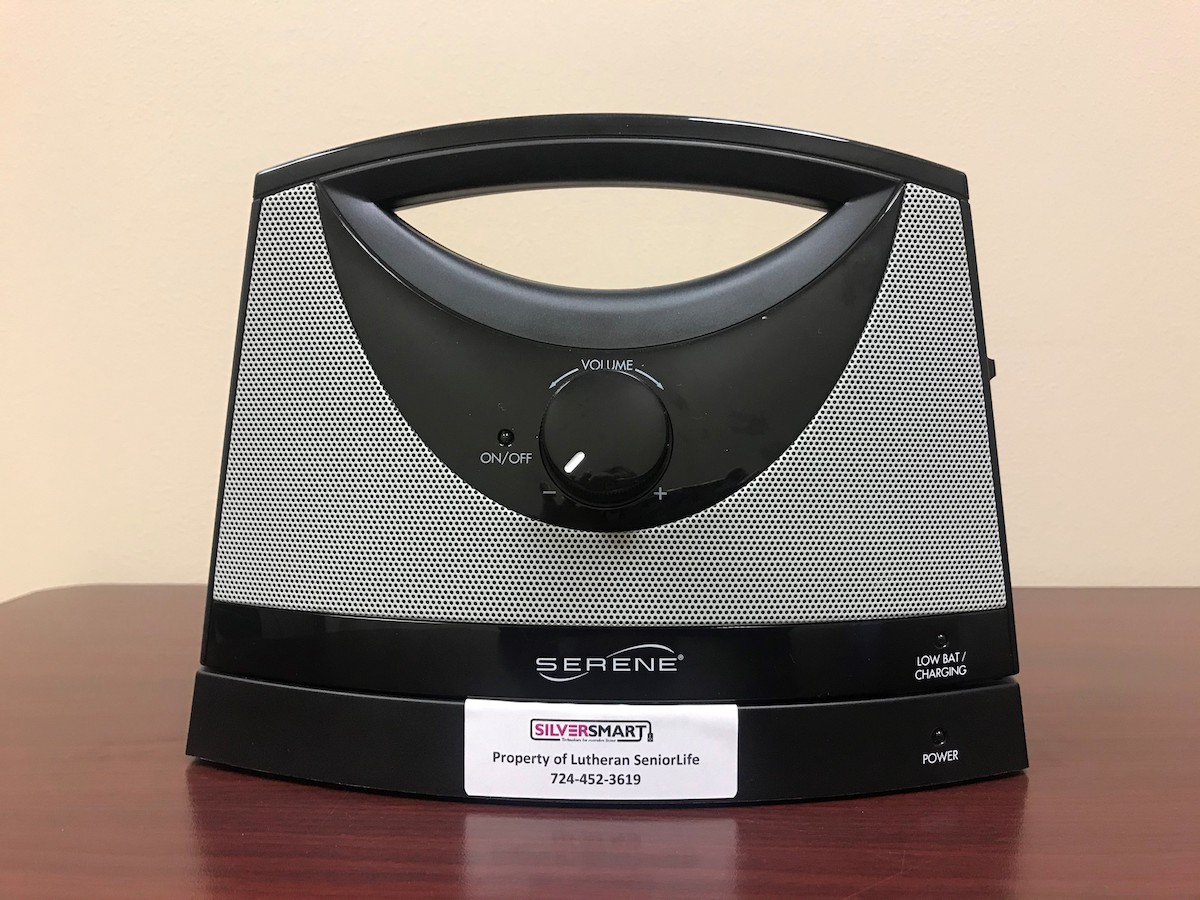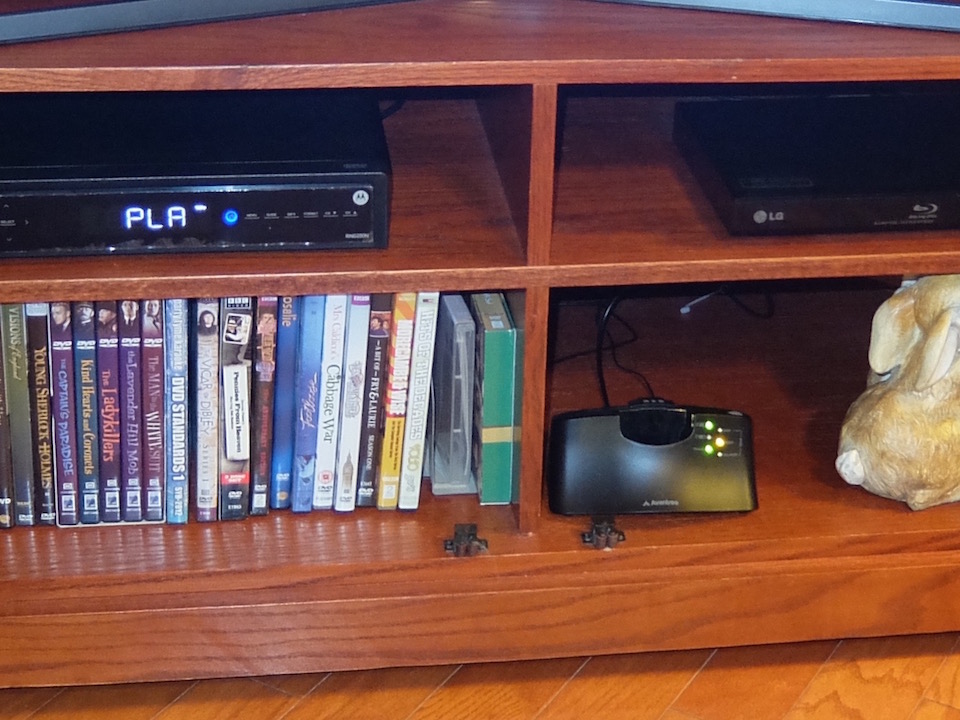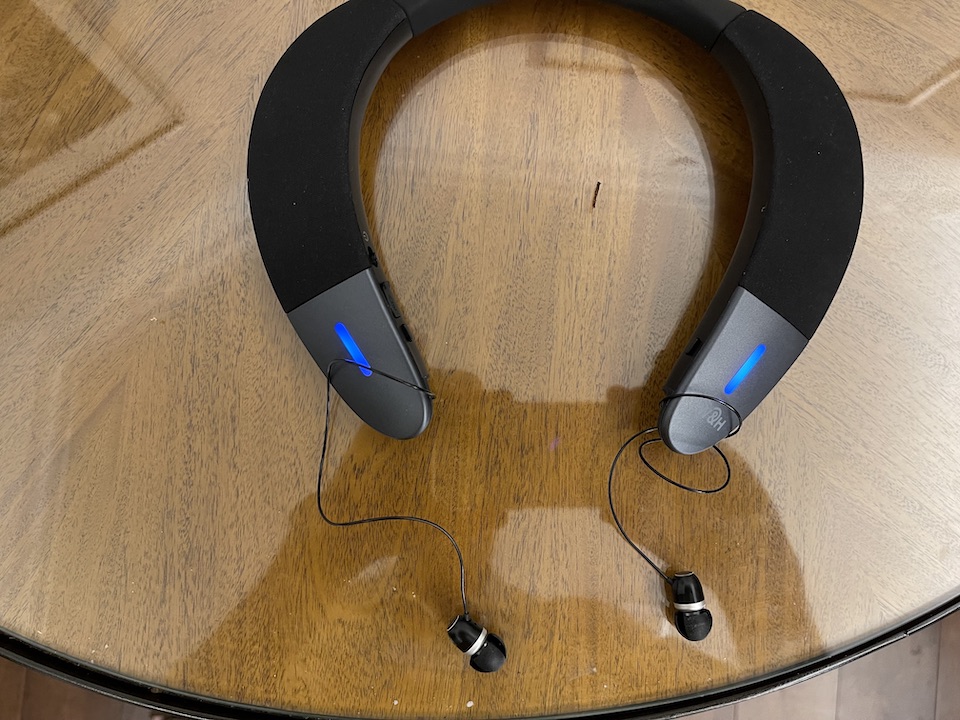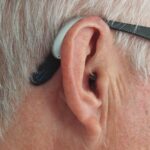By: Editorial Team | Posted: July 15, 2021 | Updated: February 18, 2025
When you buy something we recommend, we may get an affiliate commission — but it never affects your price or what we pick. Learn more
Photo by Phillip Goldsberry on Unsplash
The community of Longevity Explorers are exploring different “hearing” gadgets — to see which ones help in various situations, and to share products individual explorers have used and wish to recommend.
Ever have trouble understanding what TV or movie characters are saying over the background music? Know anyone who turns the TV up so loud that it is annoying?
This article summarizes what we learned thus far about gadgets that can help people hear better while watching TV and movies.
Overview
The Longevity Explorer community have been exploring hearing aids and other hearing-related gadgets for some time, but in 2021 we put together a special hearing explorer circle for older adults who have hearing that is not “perfect”, and who want to explore new hearing gadgets that can hopefully put off the time at which imperfect hearing starts to get in the way of living life to the full.
Initially, we are exploring products that can help in situations in which people are not “ready” yet to go out and acquire a hearing aid — either because their hearing imperfections are far too slight to need a hearing aid, or perhaps for reasons of cost or the perceived stigma associated with hearing aids.
This first synthesis of our learnings is about gadgets that can help with hearing issues relating to watching TV or movies.
Of course, for some people the right type of hearing aid is the answer, and we discuss that, as well as simpler and less expensive alternatives that work well for people with less severe hearing issues.
- We have synthesized the explorer discussions here and organized the potential solutions into different types of products / approaches below.
- We include mentions of specific products that individual explorers found useful and wanted to share.
- The audio recordings of the explorer discussions are attached (on the right for big screens, below for small screens), so you can listen to the entire discussions to hear the explorers in person.
- You can also browse a variety of hearing related products our explorers consider “useful, innovative and noteworthy” from the Tech-enhanced Life listings database (see the grid below the article).
The products we mention come recommended by individual explorers, however we have not done an in-depth, formal evaluation of them, and there may well be other good products our explorers have not yet discovered. If there are products you use, feel free to join the discussion in the comments section at the bottom of the page.
This article was NOT sponsored by any vendor or other third party. Some of the links to individual products may be affiliate links (for example links to Amazon).
The sections in this article are:
- The Right TV Sound System
- Wireless Speaker from TV
- Wireless Headphones or Earbuds for Watching TV
- TV and Hearing Aids
- Closed Captions
- Which “Better Hearing Features” Matter?
The Right TV Sound System
Most modern TVs have rather low quality sound, largely as a result of the emphasis on “thinness” of screen. This is one of the fundamental reasons for hearing issues related to TV.
The consumer electronics industry has approached this issue by creating a product category, called the “soundbar”, which is a separate product designed to connect to the TV and deliver far higher quality sound.
There are many soundbars available, often sold as an accompanying accessory when you buy a new TV. Some can be rather sophisticated with very high quality sound. If your hearing is otherwise pretty good, this might be all you need.
While a number of the Longevity Explorers included a soundbar in their TV watching solution, another approach taken by some was to connect the TV to their existing Hi-Fi system, which accomplishes much the same thing.
One of the explorers has difficulty hearing high tones, while her husband has difficulty hearing low tones. She commented that she had tried several soundbars and was particularly happy with one sold by Bose.
- View examples of soundbars on Amazon. [affiliate link]
NOTE: This solution can help with volume issues and sound clarity issues. It does not compensate for hearing loss by adjusting the sound of some frequencies more than others.
Wireless Speaker from TV
An alternate approach to customizing the TV sound system, is to add a separate speaker that can be positioned close to an individual.
The idea here is to put the source of sound right next to the listener, to eliminate issues due to the room acoustics, and also perhaps to avoid that person needing to turn the sound up very high. In addition, the speaker has a sound volume that can be adjusted independently from the TV volume.
One of the Longevity Explorer circles did a hands on evaluation of one such product, called the Serene Innovations TV Soundbox, and liked it.

Photo credit: Passavant Explorers.
- View Serene Innovations TV Soundbox on Amazon*.
NOTE: This solution can help with volume issues and sound clarity issues. It does not compensate for hearing loss by adjusting the sound of some frequencies more than others.
Wireless Headphones or Earbuds for Watching TV
The trouble with counting on adjustments to the sound system to help with TV hearing issues is that the solutions above affect everyone in the room, and not just one individual.
The solution to this is either headphones, or earbuds, or hearing aids that connect directly to the TV and have volume and other sound parameters that can be independently adjusted compared to what other people in the room hear.
Historically, a popular approach has been to use some type of wireless headset to help with TV watching.
- The basic version of this type of wireless headset allows you to adjust volume independently from what others hear.
- More sophisticated versions also allow you to adjust the frequency spectrum of the amplified sound, to compensate for hearing loss at specific frequencies.
There are a variety of technologies that can be used to wirelessly connect the headphones to the TV. Some TVs come with the ability to wirelessly connect built in. Or, if your TV does not have that, you can usually buy an accessory that connects to the TV, and which sends out the wireless signal needed to send the audio signal to the headphone.
The basic approach to wireless headphones for TV involves a small box near the TV that broadcasts a signal (either optical or via RF or most recently via Bluetooth) to the headphones (or earbuds) you wear.

Caption: Example of the “box” near the TV that sends a signal to the headphones (bottom right compartment of TV console). Photo credit: Explorer John P.
The choice of connection technology is one differentiator to watch out for.
- Optical connection has advantages in that it has excellent freqnecy characteristics and can have low latency. However it is a line of sight technology that can cause issues if you want to walk around while listening to the TV.
- Alternate products exist that use RF technology, which can help with the line of sight issue. We are not certain whether these RF connection headphones are equal in other ways to the optical ones or not (one of the explorers has them and likes them).
- The newest approach to connectivity is to use Bluetooth, and in the future this seems likely to be an increasingly important solution. Some Bluetooth products today have latency issues which means there can be a lag between the picture and the sound. The more sophisticated Bluetooth headsets and earbuds claim to have largely fixed this lag issue.
Below are specific products that specific explorers like and recommend, and which represent examples of each of the categories above. But note that these examples have different levels of sophistication (and price), so pick the one that matches your hearing needs.
Optical Connection: TV Ears
One of our explorer circles did a hands-on review of the most well known competitor in this space, called TV Ears, and were positive about it.

Caption: TV Ears worn by an explorer. Photo credit: Passavant Explorers.
The TV Ears reviewed by our explorers used an optical signal to connect from the TV to the headphones, and has independently adjustable volume, and some sound processing that they claim helps “clarify voice”, but no adjustable frequency response that can match your personal hearing profile. The one available on Amazon at the time we updated this article (Nov. 2023) appears to use a 5.8GHz wireless signal).
- View TV Ears on Amazon*.
RF Connection: Wireless Earbuds or Headphones from Avantree and Sennheiser
One of the explorers wanted some type of headphones / earbuds for TV watching, primarily because he and his wife liked very very different volumes for their TV watching. He wanted an RF connection rather than an optical connection because he wanted to be able to move around the apartment without worrying about losing the signal.
Explorer John P. said:
“the big disadvantage of the optical signal [to connect TV to headset] is that it is strictly “line of sight”. So if I leave the room, inadvertently cover the light sensor on the receiver with my hand, or even twist my body slightly so that the sensor is not pointing directly at the light source, then the sound from my headphones goes dead.
With the RF signal, I can walk around, leave the room, and still not lose the sound connection. I am not aware of any situation where the optical link would be preferred over the RF link.”
After some research he chose a product made by Avantree, which is a company that frequently is mentioned in reviews of this type of product as being one of the leaders. His report was that he was pleased with the product, as was his wife.
Below you can see the headset in action. Note the unit around the neck, as well as the earbuds.

Caption: Explorer John P. wearing the TV earbuds. Photo credit: Explorer John P.
The Avantree product uses an RF signal to connect from the TV to the headphones / earbuds, and has independently adjustable volume, and a choice of several frequency profiles you can select from, which can help with the sort of frequency-dependent hearing loss many people have. It does not let you tailor the frequency profile specifically to your personal hearing loss profile.
- View Avantree TV Wireless Earbuds on Amazon*.
Several other explorers use similar products made by Sennheiser.
View Sennheiser TV Wireless Headphones on Amazon*.
Bluetooth Earbuds for TV: BeHear
One of our explorers recently reported back on a relatively new product that he had acquired and liked.

Caption: BeHear Hearing Amplifier. Photo credit: Explorer Pete K.
This product — with the brand name BeHear, sold by WearandHear.com, and made by Alango — connects via Bluetooth to the TV, and has an unusual form factor (see image below). A key feature is that it includes the ability to “personalize” the hearing profile.
There is also a version with a more conventional “earbud” form factor.
- View BeHear Hearing Amplifiers on Amazon*.
Apple AirPods Pro for TV
Some of our explorers use the Apple AirPods Pro (wireless earbuds) to listen to TV on a computer or iPad, and report that it works really well. These connect via Bluetooth.
In principle these products should also work well, we think, for watching on a conventional TV. However, we have not yet explored whether or not there are “issues” with either connecting or with lag, which some reports online suggest might be an issue. If you have experience, please add comments below.
A big advantage of the Apple AirPods is that they allow you to customize the audio listening profile to match your personal hearing loss profile — as well as the fact that many people have them already and use them for other purposes like listening to music or making phone calls.
TV and Hearing Aids
For people who already have hearing aids, the ideal solution to watching TV is to have a direct Bluetooth signal from the TV to the hearing aids.
This allows you to bypass the room audio, adjust volume independently, and have your own personal audio profile compensated for by the hearing aid.
The key step here is to have a hearing aid with the appropriate Bluetooth connectivity, and a TV that can output a Bluetooth signal (or an accessory that plugs in to the TV and enables that).
Many of the modern, high-end hearing aids make this possible.
Interestingly, of the explorers who participated in this exploration and had hearing aids, none had yet tried this “solution”. If you have experience with it, please add your comments.
Closed Captions
Regardless of which of the above solutions people selected, a common refrain among the explorers was that turning on the Closed Captioning on the TV helped a lot.
There are doubtless issues about which programs and or TVs enable Closed Captioning. We have not explored these issues yet. If you have experience and insights, please share them.
Which “Better Hearing Features” Matter for TV Watching?
If one of the above solutions seems appropriate for you or for a family member or friend, there are some extra things to consider as you try and choose a specific solution that would be best for an individual.
Frequency Adjustment
Hearing issues are often pitch-dependent. For example, people have trouble hearing high tones or low tones, rather than just having “loss” that is the same at all frequencies.
If this is a feature of your hearing, then the ability to have a frequency dependent compensation / amplification is important.
Speech from Background
Separating speech from background is a common “issue”.
Getting the right frequency compensation and eliminating bad room audio can help with this issue.
In addition, some products come with specific “speech enhancing” features. We have not delved into exactly how these work, or how effective they are, but this might be important.
Directionality
Some products incorporate a level of directionality so that you hear best the sound that comes from in front of you.
This can be very important in settings where there is a lot of ambient noise. It seems less important for most TV-watching scenarios, however.
Separate Sound from Room Acoustics
Sometimes, the primary issue is poor TV sound systems or bad room acoustics.
These issues are automatically eliminated if you use one of the headphone or earbud approaches. They are also addressed by improving the TV sound system to a certain extent.
Learn More
Our explorations of hearing are on-going. If you want to learn more, here are some suggestions.
- Browse our Hearing Topic Hub
- Sign up for our Newsletter and get notified when we publish new things relating to hearing.
Acknowledgements
A number of explorers contributed to this work, some via email, some in discussions, and some in posts reporting back on individual products. Thank you to all of these explorers for sharing what you have learned with other older adults and their families around the world.
*Disclosure: The research and opinions in this article are those of the author, and may or may not reflect the official views of Tech-enhanced Life.
If you use the links on this website when you buy products we write about, we may earn commissions from qualifying purchases as an Amazon Associate or other affiliate program participant. This does not affect the price you pay. We use the (modest) income to help fund our research.
In some cases, when we evaluate products and services, we ask the vendor to loan us the products we review (so we don’t need to buy them). Beyond the above, Tech-enhanced Life has no financial interest in any products or services discussed here, and this article is not sponsored by the vendor or any third party. See How we Fund our Work.


Thanks for this article it is
Thanks for this article it is helpful to learn of what is available.
My hearing loss is severe and have tried the the wireless headset, which is ok for spoken only programmes but hopeless with any background sounds.
I have to wear the headset with hearing aids for it to be useful.
A cochlear inplant is a possibility for which I would have to be assessed.
The other alternative is a blue tooth added to my existing hearing aid if that can be done.
Looking forward to more information from you, please keep up the good work you are doing.
Ron Curwood
Hello! Does anyone know of
Hello! Does anyone know of or recommned products for the home that will a flash a lamp or flash lights when a phone or doorbell rings? We have customers who's love-ones have poor hearing or forget/refuse to use their hearing hearing aids and cannot hear the phone ring. I see a few products online that flash a strobe lite or vibrate, but would be interested if anyone has a favorite or recommendation. Thank you!
Mike Liskai
If they have a smart doorbell
If they have a smart doorbell and an Echo Show or Fire TV, this could work.
Solution: Ring Doorbell Announces Visitors via Echo Show or Fire TV Cube
It can even save them the bother of going to the door; it's someone they should ignore